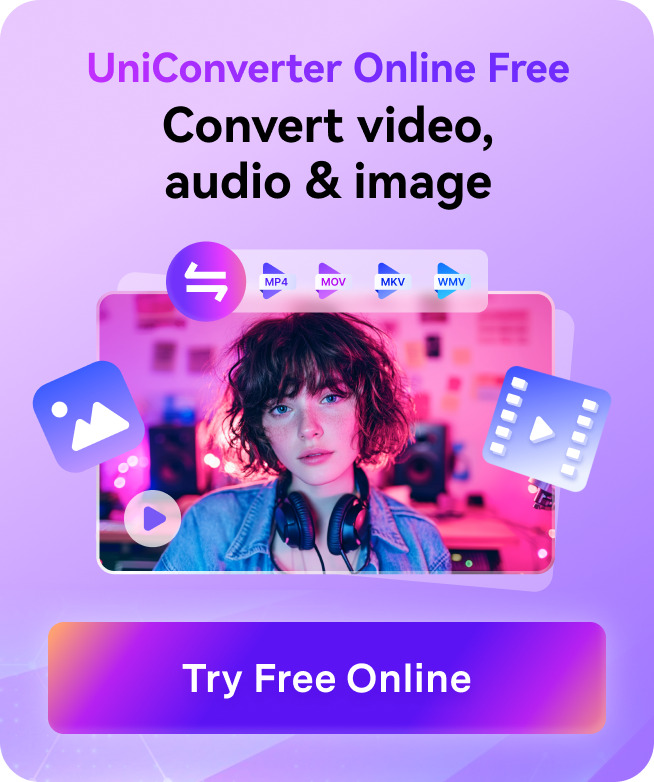All You Need To Know About HDR Videos
Unlock a world of vibrant visuals with HDR video technology. Imagine watching your favorite content with lifelike colors, incredible contrast, and a level of detail that draws you in.
In this article, we delve into the realm of HDR video, decoding its essence and unraveling its benefits. We cover everything from the mesmerizing 4K60fps and 8K HDR videos to understanding the disparities between SDR and HDR. Join us in exploring the brilliance of HDR as we define it, highlight its advantages over conventional formats, shed light on its limitations, and even provide a bonus tip on converting HDR to various video formats.
In this article
Part 1. Definition of HDR video
High Dynamic Range (HDR) emerges as a video technology revolution, redefining visual experiences. This segment unveils HDR's essence by introducing its luminance and color dynamics, contrasting starkly with Standard Dynamic Range (SDR) norms.
Unlike SDR's flat visuals, HDR captures a broader spectrum of brightness, revealing both shadows and highlights. This expanded range stems from merging multiple exposures of a scene, unveiling intricate details with clarity. Moreover, HDR extends to colors, employing an extensive gamut to replicate nature's hues authentically. From fiery sunsets to immersive landscapes, HDR captures them with breathtaking precision.
Part 2: Advantages of HDR Over Other Video Formats
Building upon the groundwork of HDR's definition, let's delve into the distinct advantages that HDR boasts over its video format counterparts. As we explore these facets, it becomes evident why HDR has captured content creators' and viewers' attention and admiration.
1. Enhanced Visual Realism
The most pronounced advantage of HDR is its ability to deliver an unparalleled level of visual realism. Unlike conventional formats like SDR, with limited dynamic range, HDR's expansive luminance and color range recreate scenes as they appear in real life. This results in a more immersive experience where details in both shadow and light are vividly visible, elevating the viewing journey.
2. Vivid Colors and Fine Details
HDR's broader color gamut allows for a richer and more diverse palette of colors. This feature is particularly noticeable in scenarios like sunsets or underwater scenes, where the interplay of colors is strikingly lifelike. Additionally, fine details are preserved even in challenging lighting conditions, ensuring nothing is lost in translation.
3. Captivating Contrast
HDR's ability to portray a wide dynamic range ensures that scenes with extreme contrasts are faithfully rendered. HDR maintains the intended visual impact without compromise, whether it's the sun's brilliance against a dark landscape or the intricate details within a dimly lit room.
4. Immersive Depth and Dimension
HDR's dynamic capabilities also contribute to heightened depth. The juxtaposition of bright and dark areas accentuates spatial relationships, making scenes feel more three-dimensional. This aspect can greatly enhance storytelling, as visual cues are more pronounced and engaging.
5. Future-Proofing Content
With technology advancing rapidly, HDR ensures that content remains relevant and captivating for years. As display technologies evolve, HDR content is designed to make the most of these advancements, providing a seamless transition into the future.
6. Expanding Creativity for Filmmakers
HDR empowers content creators with a broader canvas to tell their stories. Filmmakers can leverage HDR's capabilities to create visually stunning effects, emphasizing vital elements within scenes and invoking emotions with precision.
7. Evolving Ecosystem
The HDR ecosystem continually grows, with more devices and platforms supporting HDR playback. This means viewers can enjoy HDR content across various screens, from TVs to mobile devices, amplifying its impact.
Part 3: Limitations of HDR Compared with Other Video Formats
While the advantages of HDR are compelling, it's important to also consider the limitations of this format in video technology. Acknowledging these constraints provides a comprehensive understanding of HDR's position in the visual landscape.
1. Display Compatibility Challenges
One of the challenges HDR faces is the variance in display capabilities across devices. Not all screens are equipped to fully harness the potential of HDR, leading to inconsistencies in how content is presented. This can affect the intended impact and undermine the immersive experience that HDR aims to provide.
2. Learning Curve for Creators
Creating HDR content requires a nuanced understanding of its intricacies. Filmmakers and content creators need to adapt their techniques to fully exploit HDR's capabilities. This transition can involve a learning curve and additional investment in equipment and software.
3. Bitrate and Storage Demands
With its extended dynamic range and rich color gamut, HDR content demands higher bitrates for optimal quality. This results in larger file sizes, which can strain storage and bandwidth capacities, especially in contexts with limited resources.
4. Post-Production Complexity
HDR workflows introduce complexities in post-production, requiring specialized equipment and software. Managing HDR metadata, color grading, and mastering necessitates a refined skill set.
While these limitations are significant, it's crucial to remember that HDR's evolution is ongoing. As technology advances and the ecosystem matures, many of these challenges are likely to be addressed, making HDR even more accessible and seamless for both creators and viewers.
Bonus Tip: How to Convert HDR Videos Using UniConverter
In the journey of exploring HDR's potential and limitations, it's essential to have the right tools for seamless conversion. Suppose you're looking to convert HDR videos to different formats. In that case, Wondershare UniConverter stands out as an exceptional solution, streamlining the process with its user-friendly interface and powerful features.
![]()
HDR video conversion might seem complex, but with the right tool, it becomes remarkably simple. Wondershare UniConverter intelligently analyzes the HDR content, extracts the dynamic range, and adjust colors to match the target format. This conversion process ensures that the HDR essence is retained, even when transitioning to non-HDR formats.
Why Choose Wondershare UniConverter:
- Easy to use:UniConverter has a user-friendly interface that makes it easy to convert HDR videos. Even beginners can use UniConverter to convert HDR videos with ease.
- High conversion speed:UniConverter can convert HDR videos at a high speed. This means that you can convert your HDR videos quickly and easily.
- Wide range of supported formats:UniConverter supports a wide range of video formats, including HDR, SDR, MP4, MKV, AVI, and FLV. This means you can convert your HDR videos to any format you need.
- Lossless conversion:UniConverter can convert HDR videos without losing any quality. This means that you will get the same high-quality video after conversion.
- Batch Conversion Efficiency: UniConverter's batch conversion feature comes to the rescue if you have multiple HDR videos to convert. Save time by converting multiple files simultaneously, streamlining your workflow.
Additional tips for converting videos into HDR format:
- Make sure that your computer has a powerful graphics card. HDR video requires more processing power than SDR video.
- Use a high-quality HDR monitor to view the converted video. A low-quality monitor will not be able to display the full range of colors and contrast that HDR video can offer.
- Calibrate your monitor to ensure that the colors are accurate. HDR video can look washed out if your monitor is not calibrated correctly.


